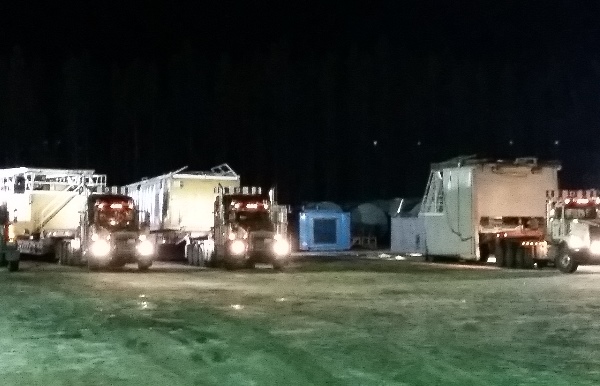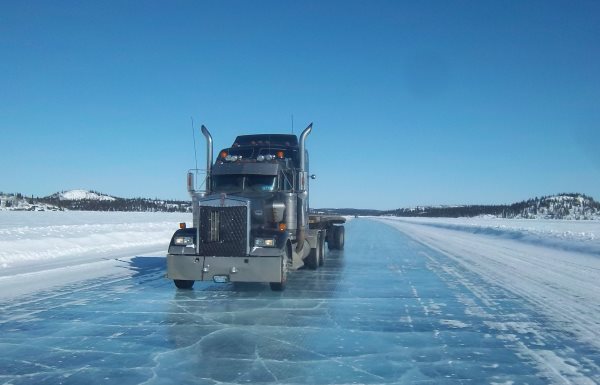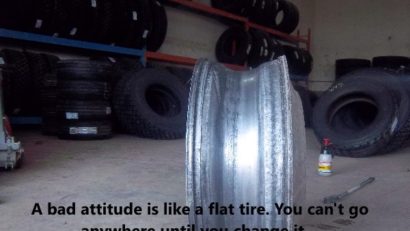Driving Lights
Driving lights are the cause of much controversy in recent years. They seem to have become more of a “cool” accessory than a necessity. Most truck drivers along with auto drivers are not aware of federal, state, or provincial fog light and driving light laws.
Furthermore, the laws are rarely enforced and inconsistent across different governing bodies. They’re also difficult to find as I found out researching some points for this article.
As a courtesy to others on the road, follow the same rules as high beams. They should be shut off with oncoming traffic or when following closely to others. The advantages to you are minimal in relation to the glare they produce to other drivers.
Many drivers forget they’re on, so here’s a test to determine whether they’re worth having on or not. Turn them on and off while driving down a dark road. If there is little or no improvement, then leave them off. They’re doing little or nothing to increase your vision, but they do create glare for others.
The most productive use for driving lights when used with low beams is to aim them lower than your headlights, and just slightly towards the ditch. This will help you read the road conditions in adverse winter conditions. Keep in mind they’re offensive to oncoming traffic in rainy conditions as this produces severe glare. Part of “sharing the road”, means allowing the other traffic to be able to see.
Factory installed driving lights on most commercial trucks are set up to come on with and assist the high beam. Experienced drivers usually aim the driving lights towards the ditches rather than down the road. This makes for more effective use of the lights by warning you of potential hazards like wildlife. Your high beams are already aimed down the road.
Many trucks now have an extra set of driving lights. These can be used with low beams, and are usually operated by a separate switch. Driving lights on most cars and light trucks have a pull out switch for the driving lights on the headlight switch or somewhere else on the dash.
Contrary to what people claim, these provide minimal improvement to the driver when aimed with headlights. They do provide glare to oncoming drivers that reduces their ability to see. So why use them?
As a truck driver, I’m confident in saying most people are unaware they’re even on, or that a switch for them exists. I hope to one day do a survey on it thinking the results would be interesting. If you stopped 1000 people with fog lights on and asked them to turn them off, how many would fumble around not knowing how?
Most drivers running high beams, driving lights, fog lights, or even off-road lights are unaware of driver courtesy. The problem is driver consideration and courtesy is rarely taught.
Many driving and fog lights are poorly aimed and maintained. The lenses are often in poor condition due to cracks or rock chips. This can scatter light particles as we mentioned earlier. All your lights should be maintained properly, and frequently cleaned in adverse conditions.
Fog Lights
Fog lights and driving lights are not the same thing. While fog lights can be yellow or white, driving lights can be white only. The difference is fog lights produce a wide bar shaped beam of light and are mounted lower. Depending on your local laws, they usually can only be used in conditions like fog, rain, snow, or poor visibility.
Fog lights are aimed lower to cut down on glare and are best used by themselves for maximum effectiveness. Each light on your vehicle has its own specific purpose, so use them correctly and legally depending on your laws.
.
Some places may not allow you to run them alone, so check the local laws when using them. Unfortunately, this law never made sense to me. The reason you use them alone is to reduce glare back to you from the fog, snow, or moisture. Having headlights on at the same time negates the value of the fog light.
What makes sense?
We all have our ideas of how the world should work according to us. My personal opinions are expressed below, and I understand as drivers we don’t always agree on everything, so we welcome your opinions and comments.
I guess having my own site makes me feel entitled to give my opinion, so here it is,
Standard laws on lights should be simplified for safety, compliance, and make it easier for enforcement. Standard laws everywhere something like this,
Two front lights only on low beam with any oncoming traffic at a specified distance. The same applies when following other traffic within a certain distance. This limits glare and allows both parties an equally fair ability to see the road and low contrast hazards. Fog lights only in adverse visibility conditions.
All vehicle manufacturers should be mandated to comply with driving lights wired to come on and assist high beams only. Four additional forward auxiliary lights are allowed. These can be either “fog”, or “driving” lights, but must comply with intensity laws. They must also be properly aimed and maintained.
As a driver, how do you feel about this topic? You’re welcome to read comments by others in our high beams and driving lights discussion forum. You can also have you say, or start your own topics by registering to use our forums.








